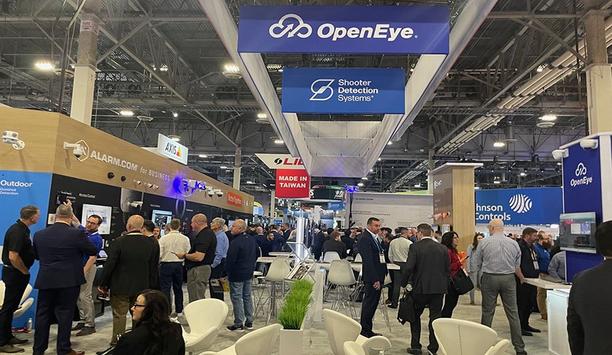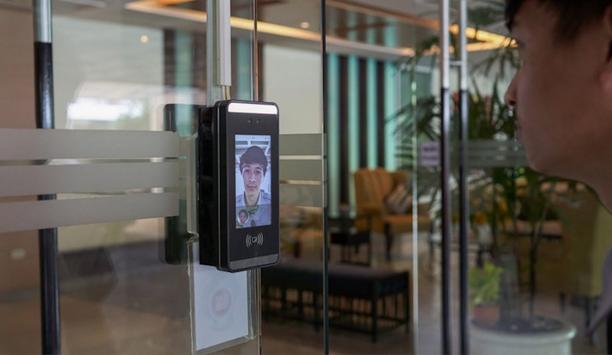360-degree view cameras are becoming popular in security, but more education about the technology is still needed in the industry, says Scott Brothers, regional account director, Europe, for Oncam, a provider of 360-degree camera technology. Various parts of the world are at different stages of awareness of the technology, which can benefit the traditional security end user and is also finding uses in other departments and even other markets.
User experience quality
Oncam was an early proponent of “client-side dewarping,” which provides the full 360-degree camera view to the client software and allows the user to decide which part of the image to dewarp for viewing and/or to scroll around in the complete 360-degree image. Brothers says the “quality of the user experience” is a key point of differentiation for Oncam, which introduced a software development kit (SDK) in 2008 and actively seeks to work with partners in various vertical markets.
“We are a small company, and we want to be nimble and able to react to very fast-moving market conditions,” says Richard Morgans, chief marketing officer at Oncam Technologies. “We have to be able to adapt the technology to provide what end users want, so we partner with people who are knowledgeable in the various fields.”
“Heist on Cam” campaign
To increase awareness of the technology and its capabilities, Oncam has sponsored an online advertising campaign/promotion titled “Heist on Cam,” an “exciting interactive detective story” that includes 360-degree views as four interactive video puzzles. Interaction with the game promotes familiarity with how users can scroll around to view specific parts of the 360-degree view. Engaged participants get to experience how the technology works first-hand.
“When you touch and see our technology, you realise the uniqueness of what we do and the way we do it,” says Morgans. Around 1.6 million people have interacted during the successful promotional campaign, which is also a big hit on Twitter.
360-degree technology awareness
Beyond building awareness, the key to successful use of 360-degree technology is to consider each customer’s individual needs, says Brothers.
“Our approach is simply to listen, whether it’s a retail, transportation or hospitality customer,” says Brothers. “The more we can learn about their operational requirements, the more we can help them. Otherwise, we’re just selling them a box. We want to take a consultative approach. We end up bouncing ideas off each other. “
Breaking down silos
Brothers says the broad capabilities of 360-degree technology is helping to tear down the “silos” in organisations. For example, a retail loss prevention department might invest in the technology begrudgingly as a means to lower shoplifting or internal theft. In contrast, a retailer’s marketing team might embrace the cameras enthusiastically as a way to measure the effectiveness of merchandise displays, or to track customer paths through a store. By tearing down the silos, both departments can benefit from the same system.
"When you touch and see our technology, you realise the uniqueness of what we do and the way we do it", says Richard Morgans, Chief Marketing Officer at Oncam |
360-degree camera applications
Oncam is also working to implement 360-degree technology in fields outside security. Oncam partners with Gazoob in the education market to develop “classroom observation” applications; in effect, capturing video of a teacher’s presentation and interaction with students in a classroom.
Traditional approaches to capturing the video have utilised a pan-tilt-zoom camera with a narrow field of view, placed on a platform at the back of the classroom. The teacher or lecturer then carries a key fob during the lesson to allow the camera to follow him or her for the duration of the lesson.
However, rolling out the camera on “lesson capture day” tends to be disruptive and changes the behaviour and dynamic in the classroom – so it’s hard to capture a true representation. There are also blind spots, and the image can shift erratically as the lecturer moves around.
Gazoob is developing a solution that uses one 360-degree camera, mounted discreetly (and permanently) in the ceiling about a third of the way back from the front of the classroom. There is no disruption, and students and the teacher forget it’s there, so the classroom environment is captured accurately. The 360-degree field of view eliminates blind spots, and end users get the benefits of Oncam’s client side dewarping when viewing the lesson later, enlarging sections, viewing various areas, etc. The video is uploaded to a hosted cloud, and lecturers can log-in to view the video. The system has been installed in schools in the United Kingdom as Proofs of Concept.
Other uses of 360-degree video might include entertainment venues (allowing users to manipulate the view of a live event from a tablet). Another application is in medical training, where the system could capture the image of an operating theatre and combine it with real-time data about blood pressure, heart rate, etc.
The younger generation is familiar with the idea of an immersive view from the world of video games. Players of first-person games feel comfortable with the concept of shifting their view around within an environment.
The potential to do just that in the real world, using real-life 360-degree images, is now being implemented in the security and other markets. Oncam’s OnVu360 app has been downloaded 25,000 times. “People just like to watch,” says Morgans. “They like to see the technology and experience it. They just want to go on and play around with it.”










































